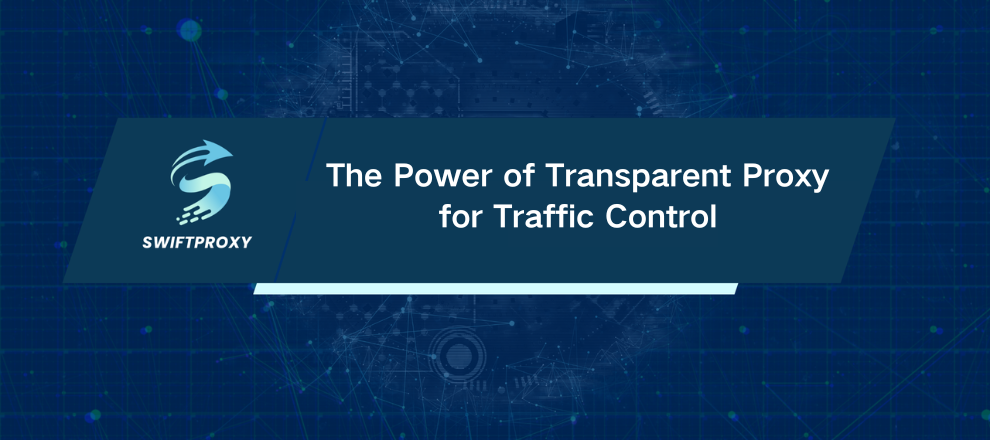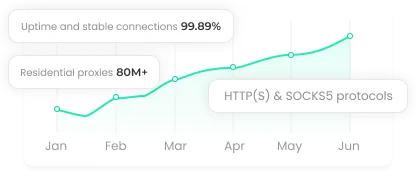The Power of Transparent Proxy for Traffic Control

Imagine every click you make on the internet being silently guided through an invisible gatekeeper—without you ever noticing. That's exactly what a transparent proxy does. Unlike traditional proxies that require manual setup, a transparent proxy works behind the scenes, automatically routing traffic while keeping the user blissfully unaware. Its purpose isn't stealth for privacy; it's about control, monitoring, and efficiency. Corporations, schools, and public networks deploy these proxies to manage traffic without disrupting user experience.
How a Transparent Proxy Works
At its core, a transparent proxy intercepts outbound traffic and redirects it through a server before it reaches its destination. The endpoint device believes it's communicating directly with the internet, but in reality, every request passes through the proxy. Network administrators set this up at the infrastructure level, using routers, switches, firewalls, or tools like NAT, iptables, or WCCP.
The result? Centralized traffic management without touching a single user setting. Requests can be analyzed, cached, or filtered automatically—all while the user sees no difference. It's seamless.
Transparent and Explicit Proxies Compared
The main distinction lies in visibility and configuration.
From the user's perspective: A transparent proxy is invisible. No manual entries, no system prompts. Internet access appears normal. An explicit proxy, on the other hand, is recognized by the user or application. Configurations may be manually entered or deployed through PAC files, Group Policies, or device management systems.
From the application's perspective: Applications assume a direct connection under a transparent proxy, while explicit proxies require applications to send requests through a defined intermediary.
The takeaway? Transparent proxies operate silently at the network level, whereas explicit proxies require awareness and interaction from the client system.
Transparent and Non-Transparent Proxies Compared
Transparency is about visibility, not secrecy. A transparent proxy exposes the client's IP address and often adds headers like X-Forwarded-For or Via to indicate intermediary usage. Non-transparent proxies, by contrast, conceal the user's IP and strip identifying metadata—ideal for anonymity, bypassing geoblocks, or protecting sensitive data.
For example, a corporate network might deploy a transparent proxy so administrators can monitor traffic while employees browse freely. The websites accessed still see the real IP address. Meanwhile, an explicit non-transparent proxy hides the user entirely, offering full privacy.
Common Use Cases for Transparent Proxies
Transparent proxies excel where invisible control and large-scale traffic management are necessary:
Content Filtering: Block access to social media, torrent sites, or inappropriate content in schools and offices.
User Activity Tracking: Track bandwidth usage, visit logs, and activity periods for compliance and auditing.
Caching Frequently Accessed Content: Speed up page loads and reduce external bandwidth by storing static resources locally.
Bandwidth Enhancement: Prevent network congestion with traffic prioritization and peak-hour restrictions.
Forced Redirection: Direct unauthenticated users to captive portals or login pages in public Wi-Fi networks.
Threat Protection: Block malware sites and prevent downloads of infected files.
Download and Traffic Limitation: Set limits on file types or total download volumes.
In short, these proxies offer invisible, scalable control without requiring user intervention.
How to Configure a Transparent Proxy
Configuration is handled by network professionals. Unlike explicit proxies, no changes are needed on user devices. Setup usually involves:
Router or Gateway: Intercepts and redirects traffic.
NAT, iptables, or similar tools: Define rules for routing requests through the proxy.
Proxy Software: Squid is popular for filtering, caching, and logging, though other solutions exist.
Proper setup demands stable infrastructure, strong security measures, and ongoing maintenance. Done right, a transparent proxy empowers administrators with precise control over network access and monitoring.
Conclusion
Transparent proxies are a powerhouse for managing traffic seamlessly. They allow centralized control, monitoring, and optimization without the headache of device-level configuration. While they don't hide user identity like non-transparent proxies, they serve as a vital tool for corporate networks, schools, and public access points.
Understanding the nuances of transparent proxies helps IT teams make smarter decisions, deploy effective policies, and maintain smooth, secure, and efficient network operations.

















































